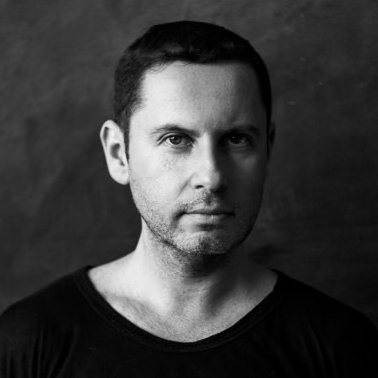It begins at whatever airport I connect through on my way from New York to Florence to attend Pitti Uomo, the premier men’s-wear trade show that kicks off the semi-annual men’s-fashion season. Whether I’m in London, Paris, Amsterdam, or Zurich, the flyers en route to the Tuscan capital can be divided into two sartorial categories: those who are going to “Pitti,” as it is called by insiders, and those who are not.
The civilians are clothed in dispiriting everyday garb—Americans in their stretched-out T-shirts and misshapen sweatpants in drab non-colors; Europeans in their neat polo shirts, blue jeans, and Nikes.

The nattily dressed pros are easy to spot among them. Their clothes are sharp in cut and color, and they are always—and I mean always—dressed a bit too heavily for the stifling Florentine summers. There are topstitch blazers and suede jackets with de rigueur quirky details, three-piece suits in eye-popping pastels, and straw hats tilted just so. On their feet is that increasingly endangered species: leather-soled shoes.

The women, though fewer in number because it is a men’s fair, hold their own. Light cashmere knits and tailored pants are buttressed by whatever version of the Adidas Stan Smith sneaker happens to have caught their fancy. Though they might not admit it, Phoebe Philo, the erstwhile Celine designer, still holds sway in their clothing choices. There is nary a logo in sight, unless it is foil-stamped in small letters on a leather handbag.
In its desire to be discreet but elite, Pitti Uomo stands outside of time. The fair, which draws hundreds of international brands that display and ply their wares before store buyers and fashion press, has also become the epicenter of a certain genre of men’s clothing. Fashion cycles may ebb and flow, but those waves are broken by Pitti’s classical bulwarks, which are supported by the unwavering conviction that civilization has yet to invent something better than a tailored suit. While the suit goes through changes as decades pass (right now, a fuller cut is in vogue), what it symbolizes to the Pitti set—craftsmanship, fastidiousness, flawless presentation of the self—remains the same. And though the fair, which launched in 1972 and can easily draw more than a thousand brands in a good season, offers much more than tailoring, the suit endures as the backbone of what Italians call sprezzatura, that considered nonchalance that furnishes a man with a certain allure.

Few men embody sprezzatura like Brunello Cucinelli, the undisputed king of Pitti Uomo. He lets his stature be known via the enormous booth he rents out at the Central Pavilion. Inside this prime real estate, a sharply dressed battalion of good-looking young men and women guard Cucinelli’s new collection like hawks in natural-colored linen plumage. Nevertheless, the booth is mobbed with visitors and well-wishers, who come to pay homage to the man who was doing quiet luxury long before the term was created and then quickly rendered insufferable by the fashion commentariat.

“Pitti Uomo is the most beautiful and the most important fair in the world,” Cucinelli told me, through a translator, as we sat in chairs of suede so lush that I could not resist surreptitiously petting mine. “It’s a place where we get to present a collection to 30,000 people,” he continued, noting the fact that Pitti is more democratic, not to mention functional, than today’s fashion shows.
Brunello Cucinelli was doing quiet luxury long before the term was created and then quickly rendered insufferable by the fashion commentariat.
But the action does not stop at his castle of a booth. At each edition of Pitti Uomo, Cucinelli throws a dinner for several hundred guests. Throughout the years, the dinners have become the stuff of legend, with editors and buyers whispering to each other upon arrival to ask whether the other was invited. This year, it was held at the cloister of Santa Maria Novella, a medieval basilica whose Dominican monks used to make perfumes, medicine, and, allegedly, poisons for the Medici family. For Pitti attendees, no trip is complete without a stop at the stunning convent-cum-shop and the purchase of a cologne or a soap.

More than any booth or purveyor or dinner, though, the main attraction of Pitti Uomo is its attendees. The event has become notorious for its “peacocks,” men who could go toe to toe with any diva when it comes to the inordinate amount of time and energy they spend putting their outfits together. They come from all ends of the earth, and many of them don’t even work in fashion; they only come to be seen. They are the sort of people who will stand for hours in the relentless Florentine sun in a three-piece suit, sweating dutifully and hoping to be photographed, and who will tell you that they are an “influencer” without the slightest hint of embarrassment. Their outfits and grooming range from the ridiculous to the sublime.

The flock has thinned lately because quite a few street style photographers have abandoned the fair because the peacocks have become insufferable in their made-for-Instagram attention-seeking. But the most dedicated birds remain. One wishes that they would remain forever, or at least long enough for us to come to a verdict on whether they are laughable or endearing.

Whatever the case, one thing is certain: as long as there is a Pitti Uomo, there will be men to populate this sartorial fantasyland, conscientious objectors to a demoralizingly casual world.
Eugene Rabkin is the founder and editor of StyleZeitgeist and the author of Stone Island: Storia. His work has also appeared in The New York Times, the Business of Fashion, and other publications


